BREATHE BACK TO LIFE
Actually, what are Superfoods?
What does this term mean and what is it referring to?
As a definition a Supferfood should be
A real superfood…
…should provide a very large amount of a certain or several nutrients, active substances or vital substances and significantly more than the usual foods.
…should be as natural as possible and comes from organic production or wild game.
…should be a full and integral food. A single vitamin or a single extracted plant substance can also have a great effect, but it is not a superfood, but rather a food supplement.
…does not have to taste delicious to be a superfood.
…does not have to be easy to snack, and it does not have to be expensive, as is often assumed by a superfood.
…could, but does not have to, come from distant tropical or arctic regions. Superfoods also grow directly in front of the Central European front door, such as the oregano, the parsley, the nettle, the dandelion, the self-grown broccoli sprouts, raw sauerkraut, barley grass and many more.
Unfortunately, the term Superfood is also a very clever and simple marketing term. There is no legal or medical definition in order to call a food “super”-food. It is simply a good way to make money.
There is also a lot of criticism around the term because it can mislead people to go to extreme in their conviction and consume large quantities of specific superfoods ending up with an “impaired, one-sided diet”
Many sources even state that it is impractical for consumers to have a diet based on a lot presumed superfoods when enough nutrients being already provided from a diet using diverse foods, especially different fruits and vegetables.
So what are we talking about it here?
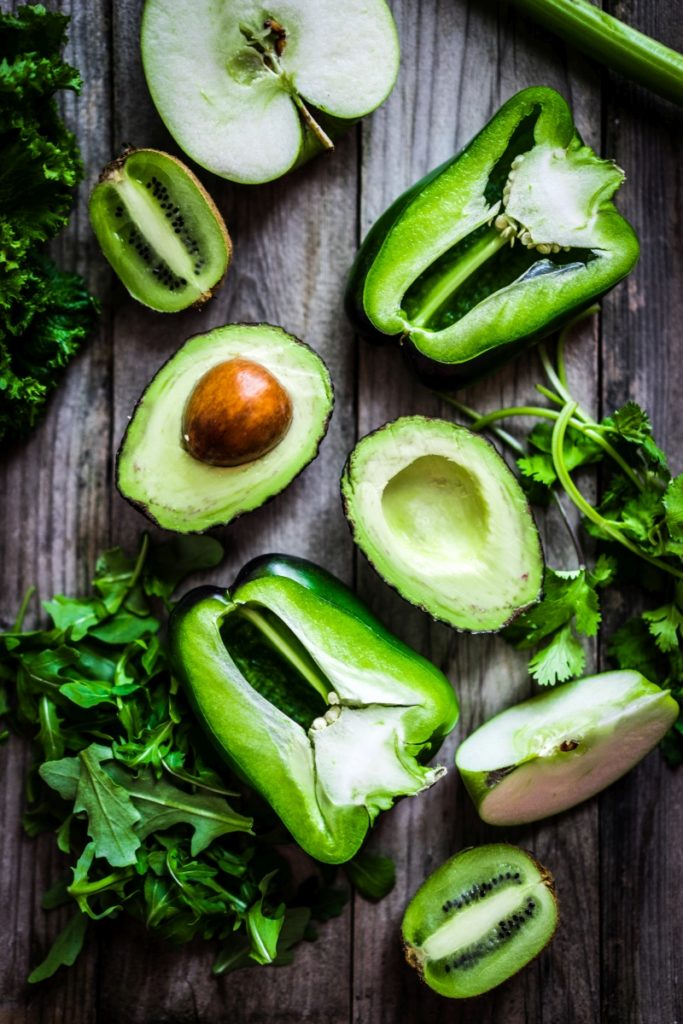
In the end, we are talking about good nutritious food. Healthy and naturally grown, which we used to eat before we started to implement processed foods into our lives.
We simply re-introducing good food sources back into our lives while learning about superfoods.
Of course, there are also a lot of exotic options of Superfood out there, and many of them are real nutritious powerhouses.
They are rich in compounds (such as antioxidants, fiber or healthy fats) considered beneficial to a person’s health. They can increase energy and vitality, regulate cholesterol and blood pressure and may help to prevent or fight even cancer and other diseases.
But so are the ones right in our front garden.
Some researches show that an ideal diet is largely plant-based with a wide variety of fruits, vegetables and whole grains. The so-called Superfoods can be a good entry into healthy eating, in becoming more aware of what is good for our body. Understanding and feeling the nutritional value of the food you eat can also be very enlightening and it will definitely change your life. It changed mine a lot.
I feel more connected with my body, more vital, lighter and in general much more alive than It used to.
So, there are many very healthy foods out in the world to explore and some of them are definitely super. Nutritious powerhouses that hold a large amount of goodness in them.
Lets have a closer look !
Greens
Green leaf vegetables are our basic food. In ancient times man lived to a considerable extent from very large quantities of greens. It was easy to find in big amounts, sat well and supplied with almost all the nutrients that humans need: proteins, vital substances and omega-3 fatty acids.
Today the green leaf vegetables are not one of the main protein or omega-3 suppliers of humans. However, even a slight expansion of the daily consumption of green food can immediately lead to an improvement of your health. It is not necessarily about the protein and omega-3 content, because it is still very small even in the case of quantities which we consider to be large (eg 200 grams), but the unbeatable secondary plant materials, the vitamins, minerals, trace elements and, of course, the ultimate in green leafy vegetables: the chlorophyll. Also calcium, magnesium and iron as well as folic acid, beta-carotene, vitamin C and vitamin K are provided within the green little leaves in relevant quantities – in addition, in a well resorbable form.
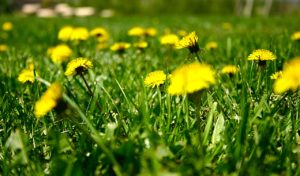 While most gardeners regard dandelion as an annoying weed, other people have recognized what dandelion really is: a miracle herb that heals not only diseases but as a regularly consumed food preserves and protects our health.
While most gardeners regard dandelion as an annoying weed, other people have recognized what dandelion really is: a miracle herb that heals not only diseases but as a regularly consumed food preserves and protects our health.
Dandelion regulates the digestion, cares for liver and bile, helps with rheumatism, releases kidneys, lets pimples and chronic skin disorders disappear and can be used as an all-round supporter for a lot of problems.
However, Dandelion not only helps you to get rid of certain symptoms but also 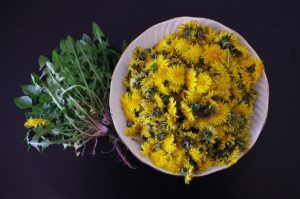 provides you with excellent nutritional and mineral supplements when you eat it as a salad – with about forty times as much vitamin A as ordinary lettuce, nine times as much Much vitamin C, four times as much vitamin E, eight times as much calcium, four times as much magnesium, three times as much iron and twice the amount of proteins.
provides you with excellent nutritional and mineral supplements when you eat it as a salad – with about forty times as much vitamin A as ordinary lettuce, nine times as much Much vitamin C, four times as much vitamin E, eight times as much calcium, four times as much magnesium, three times as much iron and twice the amount of proteins.
Also with potassium and many other minerals, trace elements and bioactive plant materials such as bitter substances and flavonoids the dandelion is not stingy. Therefore the dandelion is not only a phenomenal remedy but also a wonderfully nutritious and prophylactically effective food.
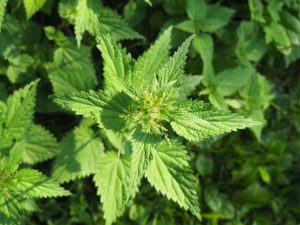 The thought of eating nettle leaves could make the alarm bells ring. If one knows that the nettle can cause severe pain at the slightest touch. If, however, the nettle leaves are boiled or cooked, they are given “any threat potential” and instead make a real superfood for many delicious dishes. At the same time, the nettle is a great medicinal plant.
The thought of eating nettle leaves could make the alarm bells ring. If one knows that the nettle can cause severe pain at the slightest touch. If, however, the nettle leaves are boiled or cooked, they are given “any threat potential” and instead make a real superfood for many delicious dishes. At the same time, the nettle is a great medicinal plant.
Nettle leaves can be processed not only to a very purifying and savory tea. They are also extremely rich in calcium, iron and protein and can be integrated into many dishes, such as green smoothies, but also as a spicy ingredient in dressings, dips, fresh cheese, bread and much more.
On top of it they contain some incredible healing properties such as,
- Therapeutic effects on the intestine: Due to its anti-inflammatory properties, the nettle can be used together with other holistic measures for chronic inflammatory diseases such as ulcerative colitis and Crohn’s disease. The entire therapy concept is explained in the above link.
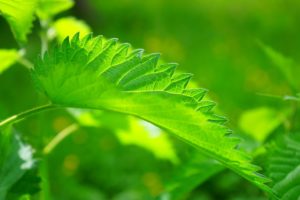
- Therapeutic effects in rheumatism: The anti-inflammatory nettle leaves, for example as a vegetable, also act very well in arthritis – not only inflammation-inhibiting, but also pain-relieving and can lead in the rheumatism therapy that less pain-killers are needed.
-
Therapeutic effect on the immune system: the nettle strengthens the body’s defenses! The Superkraut supports the proliferation of the T-lymphocytes (subspecies of the defense cells), promotes the formation of antibodies and stimulates Fresszellen to increased activity. The nettle is therefore a useful drink, food or food supplements even in times of increased contagion.
-
Therapeutic effects in case of energy deficit and fatigue: The nettle is a starching agent and is therefore suitable for those who feel tired and exhausted. For this purpose one takes the nettle seeds. They boost vitality, potency, libido, and lactation of nursing mothers. There are many reasons for this vitalizing effect. First there is the vital and mineral richness of the seeds. In addition there are the strongly antioxidative and also leberschützenden skills of the nettle seeds. In addition, nettle soils contain so-called phytosterols (beta-sitosterol), which prevent the testosterone from converting to dihydrotestosterone (DHT). The level of free testosterone should increase and explain the libido-enhancing effect.
-
Healing effect on blood and blood pressure: nettle leaves – as tea enjoyed – reduce the blood pressure as they delay the excessive blood coagulation, thus also help prevent thromboses and thus “dilute” the blood.
- Dandelion
-
 While most gardeners regard dandelion as an annoying weed, other people have recognized what dandelion really is: a miracle herb that heals not only diseases but as a regularly consumed food preserves and protects our health.
While most gardeners regard dandelion as an annoying weed, other people have recognized what dandelion really is: a miracle herb that heals not only diseases but as a regularly consumed food preserves and protects our health. Dandelion regulates the digestion, cares for liver and bile, helps with rheumatism, releases kidneys, lets pimples and chronic skin disorders disappear and can be used as an all-round supporter for a lot of problems.
However, Dandelion not only helps you to get rid of certain symptoms but also
 provides you with excellent nutritional and mineral supplements when you eat it as a salad – with about forty times as much vitamin A as ordinary lettuce, nine times as much Much vitamin C, four times as much vitamin E, eight times as much calcium, four times as much magnesium, three times as much iron and twice the amount of proteins.
provides you with excellent nutritional and mineral supplements when you eat it as a salad – with about forty times as much vitamin A as ordinary lettuce, nine times as much Much vitamin C, four times as much vitamin E, eight times as much calcium, four times as much magnesium, three times as much iron and twice the amount of proteins. Also with potassium and many other minerals, trace elements and bioactive plant materials such as bitter substances and flavonoids the dandelion is not stingy. Therefore the dandelion is not only a phenomenal remedy but also a wonderfully nutritious and prophylactically effective food.
- Stinging Nettle
-
 The thought of eating nettle leaves could make the alarm bells ring. If one knows that the nettle can cause severe pain at the slightest touch. If, however, the nettle leaves are boiled or cooked, they are given “any threat potential” and instead make a real superfood for many delicious dishes. At the same time, the nettle is a great medicinal plant.
The thought of eating nettle leaves could make the alarm bells ring. If one knows that the nettle can cause severe pain at the slightest touch. If, however, the nettle leaves are boiled or cooked, they are given “any threat potential” and instead make a real superfood for many delicious dishes. At the same time, the nettle is a great medicinal plant. Nettle leaves can be processed not only to a very purifying and savory tea. They are also extremely rich in calcium, iron and protein and can be integrated into many dishes, such as green smoothies, but also as a spicy ingredient in dressings, dips, fresh cheese, bread and much more.
On top of it they contain some incredible healing properties such as,
- Therapeutic effects on the intestine: Due to its anti-inflammatory properties, the nettle can be used together with other holistic measures for chronic inflammatory diseases such as ulcerative colitis and Crohn’s disease. The entire therapy concept is explained in the above link.

- Therapeutic effects in rheumatism: The anti-inflammatory nettle leaves, for example as a vegetable, also act very well in arthritis – not only inflammation-inhibiting, but also pain-relieving and can lead in the rheumatism therapy that less pain-killers are needed.
-
Therapeutic effect on the immune system: the nettle strengthens the body’s defenses! The Superkraut supports the proliferation of the T-lymphocytes (subspecies of the defense cells), promotes the formation of antibodies and stimulates Fresszellen to increased activity. The nettle is therefore a useful drink, food or food supplements even in times of increased contagion.
-
Therapeutic effects in case of energy deficit and fatigue: The nettle is a starching agent and is therefore suitable for those who feel tired and exhausted. For this purpose one takes the nettle seeds. They boost vitality, potency, libido, and lactation of nursing mothers. There are many reasons for this vitalizing effect. First there is the vital and mineral richness of the seeds. In addition there are the strongly antioxidative and also leberschützenden skills of the nettle seeds. In addition, nettle soils contain so-called phytosterols (beta-sitosterol), which prevent the testosterone from converting to dihydrotestosterone (DHT). The level of free testosterone should increase and explain the libido-enhancing effect.
-
Healing effect on blood and blood pressure: nettle leaves – as tea enjoyed – reduce the blood pressure as they delay the excessive blood coagulation, thus also help prevent thromboses and thus “dilute” the blood.
- Therapeutic effects on the intestine: Due to its anti-inflammatory properties, the nettle can be used together with other holistic measures for chronic inflammatory diseases such as ulcerative colitis and Crohn’s disease. The entire therapy concept is explained in the above link.
- Spinach
-
- Celery
-
- Kale
-
- Barley Grass
-
The almond is a perfect small and still basic bowl fruit. It matures on a tree with extraordinary abilities.
Neither the walnut tree nor the hazelnut creates what the almond tree accomplishes – not to mention the tropical walnut trees. In the chilling cold of January coldness unfolds its blossoms and even if the last rain falls before the summer heat in February, the almonds ripen and give man their very special power:
A fat of the best quality from mainly monounsaturated fatty acids. For this purpose, the finest fibers, namely those which are very similar to the dietary fibers of the baobab fruit, are prebiotic, which means that they use the intestinal flora, donate their food and thus ensure a healthy gastrointestinal environment.
For this purpose, fiber is the finest – namely those with prebiotic properties that use the intestinal flora. And a lot of vital substances, so that even a small portion of almonds a day contributes significantly to covering, for example, the magnesium, calcium and vitamin B requirements.
Ginger should, if you like it, be really mixed into every drink. Whether tea, juice, water, smoothie, proteindrink – ginger fits everywhere!
For ginger tea, simply mix a piece of raw ginger with hot water – done. Such tea is much more effective than the usual tea formulations in which the ginger is cooked for far too long. Ginger imparts momentum, concentration and freshness. He also expels nausea and some forms of pain. The pain relieving effect of the ginger is known for headache, but also for muscle pain: ginger effect against pain Diabetics who regularly consume ginger are also less likely to develop cataracts than diabetics who do not like the ginger. Ginger seems to protect the eyes. And as it is typical for a superfood, the ginger also has a strong anticancer effect. It reduces the aggressiveness of cancer cells and can degenerate cells in some cases even into the suicide: with ginger against breast cancer Even externally the ginger can be used and act in the form of ginger oils and ginger against dandruff and hair loss: ginger against hair problems such as hair loss
- Almonds
-
The almond is a perfect small and still basic bowl fruit. It matures on a tree with extraordinary abilities.
Neither the walnut tree nor the hazelnut creates what the almond tree accomplishes – not to mention the tropical walnut trees. In the chilling cold of January coldness unfolds its blossoms and even if the last rain falls before the summer heat in February, the almonds ripen and give man their very special power:
A fat of the best quality from mainly monounsaturated fatty acids. For this purpose, the finest fibers, namely those which are very similar to the dietary fibers of the baobab fruit, are prebiotic, which means that they use the intestinal flora, donate their food and thus ensure a healthy gastrointestinal environment.
For this purpose, fiber is the finest – namely those with prebiotic properties that use the intestinal flora. And a lot of vital substances, so that even a small portion of almonds a day contributes significantly to covering, for example, the magnesium, calcium and vitamin B requirements.
- Ginger
-
Ginger should, if you like it, be really mixed into every drink. Whether tea, juice, water, smoothie, proteindrink – ginger fits everywhere!
For ginger tea, simply mix a piece of raw ginger with hot water – done. Such tea is much more effective than the usual tea formulations in which the ginger is cooked for far too long. Ginger imparts momentum, concentration and freshness. He also expels nausea and some forms of pain. The pain relieving effect of the ginger is known for headache, but also for muscle pain: ginger effect against pain Diabetics who regularly consume ginger are also less likely to develop cataracts than diabetics who do not like the ginger. Ginger seems to protect the eyes. And as it is typical for a superfood, the ginger also has a strong anticancer effect. It reduces the aggressiveness of cancer cells and can degenerate cells in some cases even into the suicide: with ginger against breast cancer Even externally the ginger can be used and act in the form of ginger oils and ginger against dandruff and hair loss: ginger against hair problems such as hair loss
- Multiple 123
-
- Multiple 124
-
- Multiple 125
-
- Multiple 126
-



